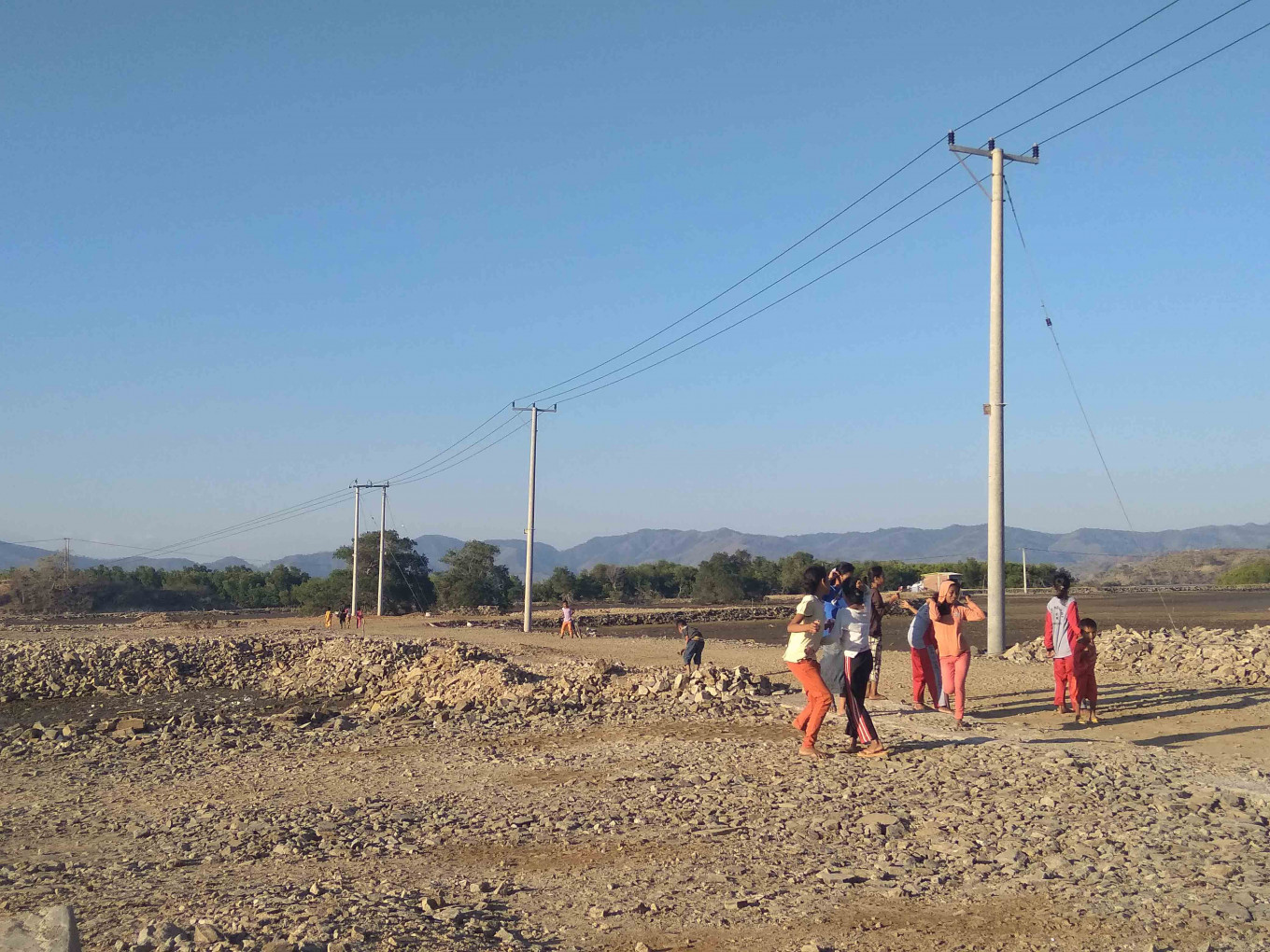Popular Reads
Top Results
Can't find what you're looking for?
View all search resultsPopular Reads
Top Results
Can't find what you're looking for?
View all search resultsIndonesia to electrify 433 remote eastern villages
the country struggles to provide electricity for the entire population
Change text size
Gift Premium Articles
to Anyone
T
he government has set a target of electrifying 433 remote villages in Indonesia’s four most impoverished provinces before year end as the country struggles to provide electricity for the entire population.
President Joko “Jokowi” Widodo has pledged to introduce regulations that boost funding for the village electrification program, which will cost at least Rp 1.26 trillion (US$76.14 million).
State-owned electricity firm PLN pledged to deploy new technology in mapping and electrifying the 433 remote villages in Papua, West Papua, East Nusa Tenggara and Maluku.
“The number is small compared with the total number of villages in the country – around 75,000 – but we still have to get this done,” said Jokowi on Friday when announcing the plan prior to a limited Cabinet meeting.
The program is part of the effort to achieve a 100 percent electrification ratio this year. PLN achieved a 98.89 percent ratio last year but it is struggling to cover the last mile, mainly due to logistical hurdles in the world’s largest archipelago.
Read also: Electrification hits rocky roads
“Once things return to normal after the COVID-19 pandemic, we will execute the program,” said PLN president director Zulkifli Zaini after the meeting. “In fact, if possible, we want most of the 433 villages electrified by August 17th,” which is Indonesia’s Independence Day.
To achieve this the state electricity company plans to deploy new mapping technology in charting the hard-to-access villages, including their power needs and most readily available energy sources. Many of the targeted villages in Papua are located in densely forested mountain areas.
PLN will also deploy an unconventional electrification strategy by installing electricity charging stations around the four provinces and distributing handheld Talis battery packs to villagers. The battery packs, which were jointly designed by five Indonesian universities, have a 15-year lifespan.
“[The Talis] are similar to a power banks except that they can light up a house,” said PLN’s Zulkifli.
PLN’s system allows villagers to light their homes by recharging the battery packs at the charging stations, which will be powered by small, mostly renewable energy-based, power plants.
The system is similar to supplying water by digging a well and distributing buckets. It is also unconventional as Indonesia previously relied on distributing solar photovoltaic (PV) kits to power remote households.
Zulkifli went on to say that PLN would spend Rp 735 billion on installing the charging stations while regional administrations would pool Rp 525 billion from their respective coffers to buy the battery packs.
PLN will coordinate with the Indonesian Military (TNI) to escort PLN technicians into the conflict-prone regions of West Papua and Papua. The company’s office in Wamena, Papua, was torched by residents in September last year amid social unrest.
Jokowi stressed that the village electrification program “has to really add value in increasing economic productivity” within the eastern Indonesian villages.
His statement resonates with the critique of energy watchdogs and politicians, who say that the 98.89 percent electrification ratio does not fully represent field conditions.
Read also: PLN can only fund one fifth of $803m needed to power isolated regions
Many villages do not enjoy 24-hour electricity and many have low-power electricity that is only enough to power lightbulbs and charge mobile devices. Neither conditions are suitable for powering the electronics needed for productive economic activity
“There are still people in rural areas who have electricity poles right in front of their houses, but can’t afford to connect them to their homes,” said Surya Dharma, chairman of the Indonesian Renewable Energy Society (METI), the country’s largest renewables association.
Energy and Mineral Resources Ministry Electrification Director General Rida Mulyana previously said Indonesia needed Rp 11 trillion to power all of its isolated regions this year yet PLN could only fund one fifth of the projects.
“Hopefully, we’ll have a solution in the first half of the year. We could have PLN and the private sector work together to resolve the issue,” he said in February.










